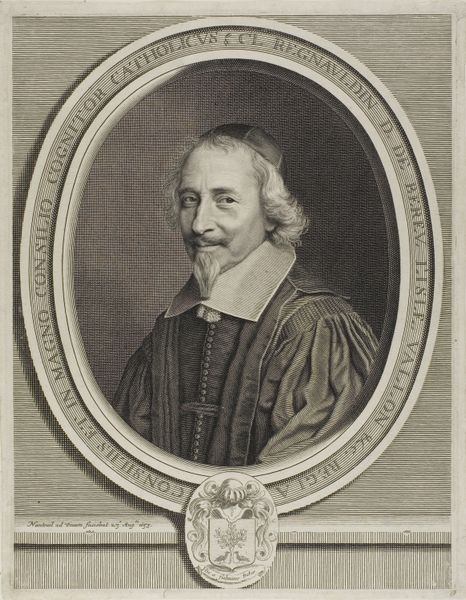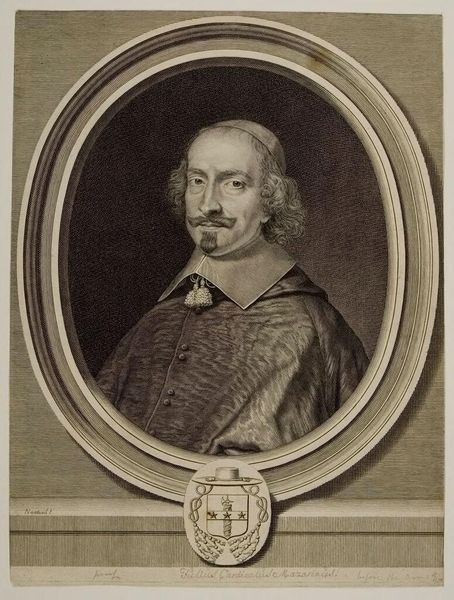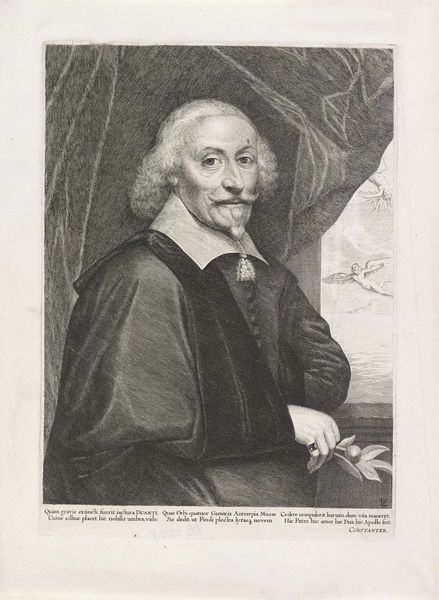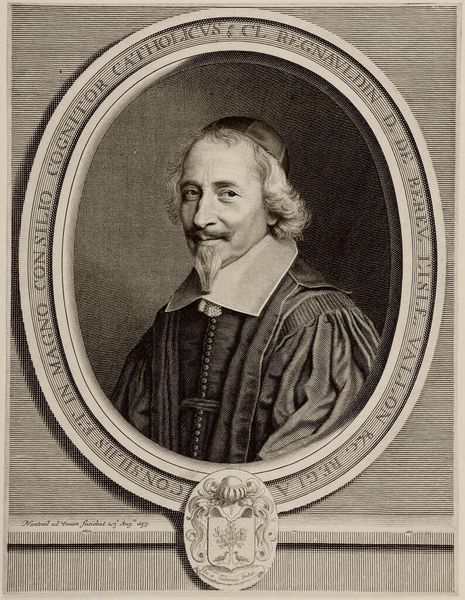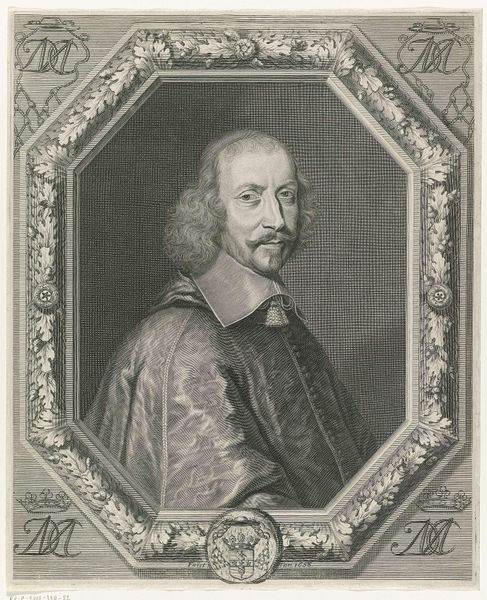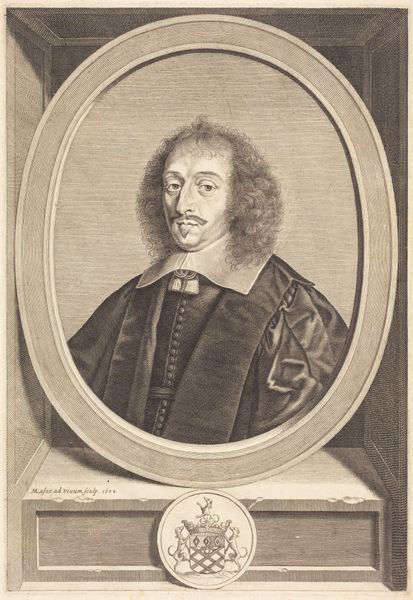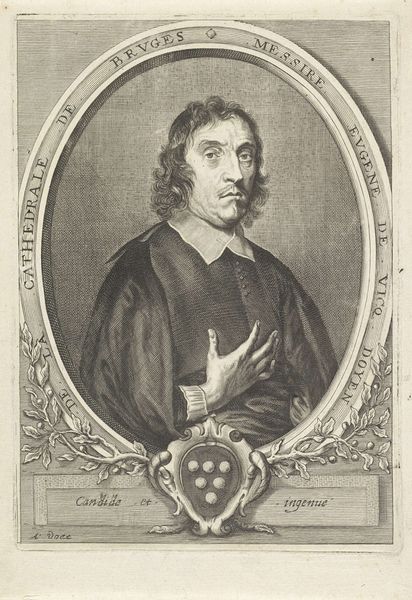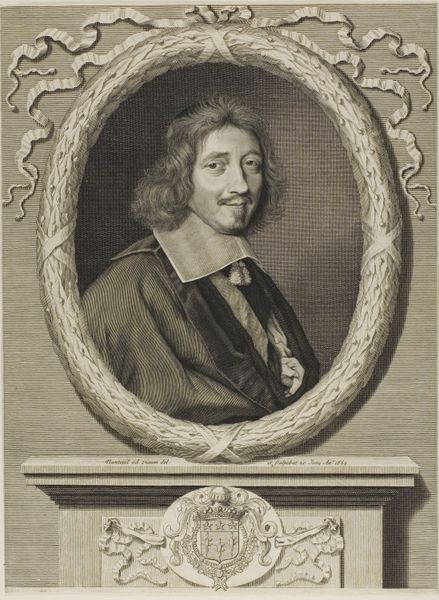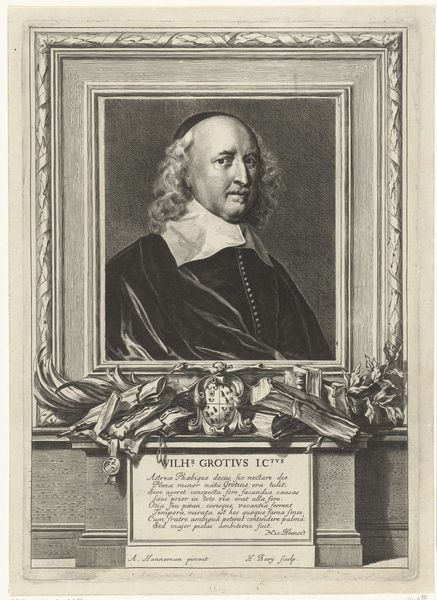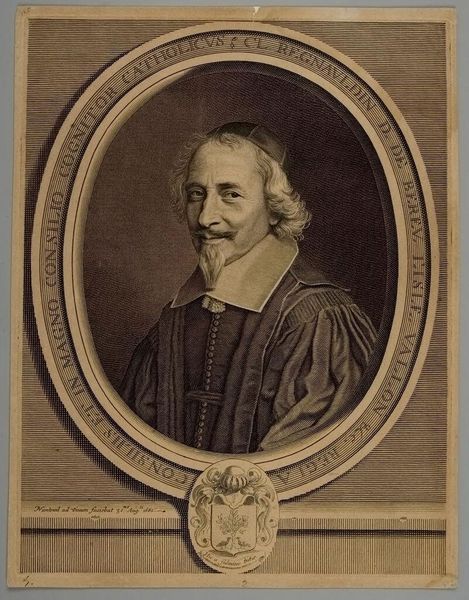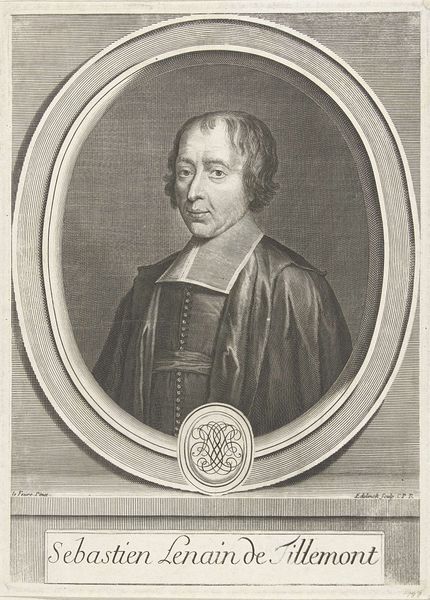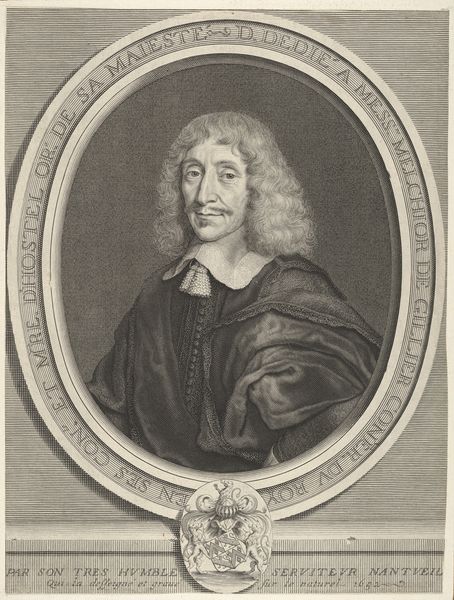
print, intaglio, engraving
#
portrait
#
historical design
#
baroque
# print
#
intaglio
#
old engraving style
#
historical photography
#
engraving
Dimensions: height 419 mm, width 304 mm
Copyright: Rijks Museum: Open Domain
Editor: So, here we have "Portret van Timan van Gessel," an engraving by Jan Edelinck, sometime between 1658 and 1680. It’s quite intricate. There’s a lot going on in the borders with objects alluding to medicine or mortality. What do you notice about the work? Curator: I'm drawn to the material reality of the print itself. Consider the engraver's labor – the meticulous process of carving lines into the metal plate. How does that relate to the profession of Timan van Gessel? Both the creation of the portrait and the practice of medicine involve specialized knowledge and precise hand work. The engraving immortalizes van Gessel through this material act of reproduction. Editor: I never thought about it that way, comparing the labor of the doctor and the engraver. So, the print, beyond just being a portrait, becomes a commentary on craftsmanship? Curator: Exactly! The portrait exists because of a network of social and material relationships: the engraver’s skill, the printing process, the market for portraits, and the sitter's desire for recognition. And look closer. Do the items within the ornate oval surrounding Timan --snake, book, time glass, rat-- also reinforce the cultural view of doctors in society, their skill, their wisdom, their role facing death? Editor: That makes so much sense. I was focused on just identifying them, not thinking about their symbolic relationship within a labor context. Curator: And beyond symbolic items, consider the consumption of prints like these. How did prints like this one function within 17th-century Dutch society, circulating images and solidifying reputations? Editor: Thinking about it that way shifts the focus from the individual to the broader system. Now I want to research who purchased these engravings and why. Curator: Precisely. By looking at the means of production and the context of consumption, we move beyond simply admiring the portrait to understanding its place in a complex social landscape. Editor: I see that, yes, definitely, I’ll try to apply this more to other works as well. Thank you!
Comments
No comments
Be the first to comment and join the conversation on the ultimate creative platform.
